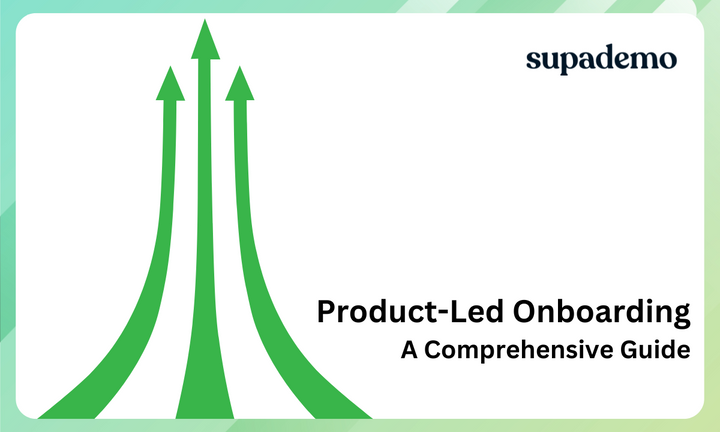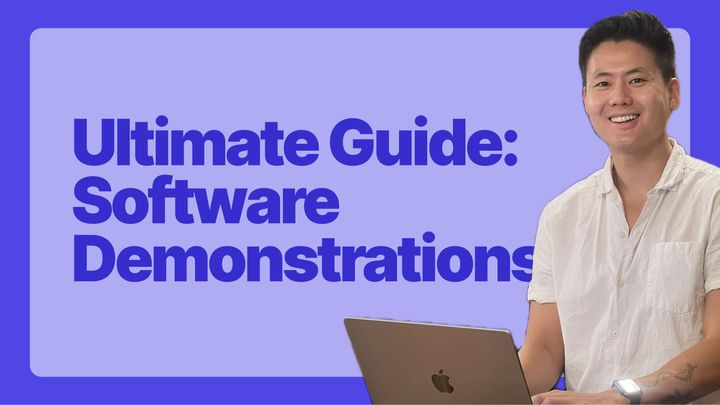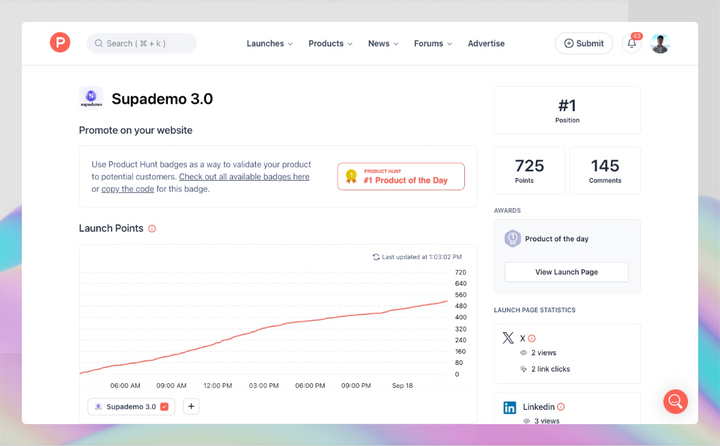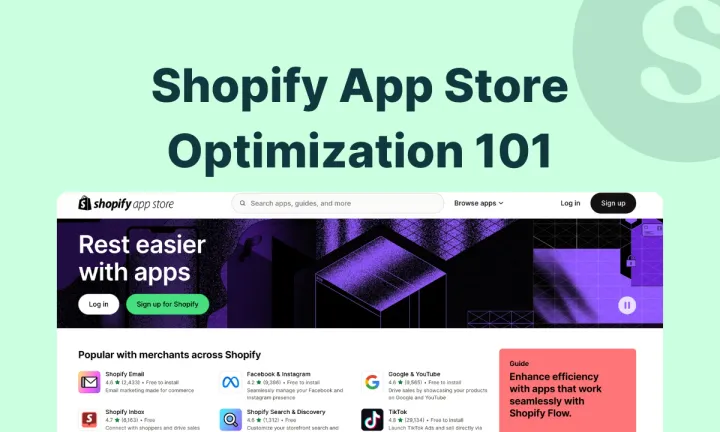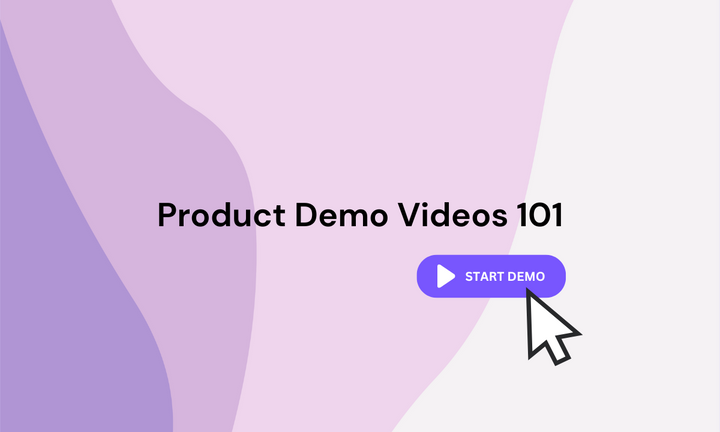Product-led onboarding helps guide new users through the initial product experience. Let's explore its types, examples, and tips.
Today, more new users than ever are abandoning products and services before they could even get started.
Why is this happening? And more importantly, how can we fix it?
Software businesses and startup founders need to realize that it's not just about sleek interfaces or fancy features. It's about creating an experience that guides users to value quickly and effortlessly.
Enter product-led onboarding ✨
Imagine signing up for a new app and immediately feeling like a pro. No lengthy in-person trainings, no frustrating dead ends - just a smooth, intuitive journey that guides you through exactly what you need, when you need it. That's the end result of effective product-led onboarding experiences.
In this comprehensive guide, we'll explore the different types of product-led onboarding, real-life examples, alongside actionable tips to supercharge your user onboarding efforts.
Now let's dive in 👇🏽
What is Product-Led Onboarding?
Product-led onboarding is a customer-centric approach that guides new users through the initial product experience in a self-serve manner – helping them quickly adopt features and find value.
Unlike traditional methods like scheduling an onboarding call, this strategy is self-paced, modular, and helps users experience the value of your offering firsthand through the product itself.
At its core, product-led onboarding is about guiding users to their "aha moment" - that instant, lightbulb moment when they truly grasp how your product can solve their problems and improve their lives. This approach stems from the broader product-led growth (PLG) strategy, which puts the product at the center of the customer acquisition and retention process.
The ultimate goal of product-led onboarding is to create an intuitive, engaging experience that showcases your product's value proposition quickly and effectively. This approach not only attracts more customers but also sets the stage for long-term success and sustainable growth.
Why Is Product-Led Onboarding Important?

“Everyone is busy, so most new users fall through the cracks; for most software products, 40% to 60% of users will sign up once and never come back.”, Ramli John, Author of Product-Led Onboarding: How to Turn New Users Into Lifelong Customers
With increasing competition in SaaS, first impressions are increasingly paramount to converting, retaining, and expanding your customer base. And where first impressions start to form is within your product onboarding experience.
With more than 50% of users typically signing up to never come back, great onboarding experiences have become paramount to business success. When done right, effective product onboarding can have a monumental impact on your bottom line:
- Faster Time-to-Value: It helps users quickly understand and experience the product's benefits, leading to faster adoption.
- Reduced Churn: By guiding users effectively, it minimizes confusion and frustration, reducing the likelihood of early abandonment. PwC showed that 1 in 3 consumers will quit after just one poor encounter in a survey of 15000 customers. After two or three unpleasant experiences, 92 percent of them declared they’d fully forsake the company.
- Cost-Effective: It decreases reliance on human resources for customer support and sales, lowering operational costs.
- Scalability: This approach allows businesses to onboard a large number of users simultaneously without compromising quality.
- Improved User Experience: It creates a smooth, intuitive introduction to the product, enhancing overall user satisfaction. According to Wyzowl, 80% of people deleted an app because they couldn’t understand how to use it.
- Higher Conversion Rates: Effective onboarding can turn free or trial users into paying customers more efficiently.
The Cost of Neglecting User Onboarding
Imagine throwing an incredible party, but guests can't get through the door. That's what neglecting product onboarding is like.
Poor product onboarding can lead to a litany of issues, including:
- Product teams end up creating amazing features no one uses;
- Marketing efforts go to waste;
- Sales teams' personalized approaches fall flat;
- CS teams are forced to manually onboard customers;
- Customers don't understand the product's value and ultimately churn;
And despite this importance, product onboarding experiences are often overlooked as a one-time checklist rather than an evolving art.
But this is clearly the wrong approach – as onboarding is the one experience every user encounters, even for those who ultimately leave.

Product-Led Onboarding vs. Product-Led Growth
While both concepts center around leveraging the product to enable end users, product-led onboarding and product-led growth serve different purposes and operate at different stages of the customer journey.
In essence, product-led onboarding is a crucial component of product-led growth.
Product-Led Onboarding at a Glance
• Goal: Guide users to their "aha!" moment quickly
• Timeframe: Typically occurs during the first interactions with the product
• Methods: Interactive tutorials, guided tours, task lists, tooltips
• Outcome: Reduced time-to-value and increased initial adoption
Product-Led Growth at a Glance
• Goal: Drive acquisition, retention, and expansion
• Timeframe: Ongoing, from first touch to long-term usage
• Methods: In-app experiences, self-service features, viral loops, upsell prompts
• Outcome: Sustainable business growth and increased customer lifetime value
Ultimately, product-led onboarding is a facet within product-led growth. In addition to scaling enablement and onboarding, this approach benefits teams across marketing, sales, operations and more with:
- Resource efficiency;
- User-centric strategies;
- Alignment with product adoption metrics;
Now that we have a quick summary of the key differences between the two product-led concepts, let's dive into the different types of product-led onboarding experiences:
Five Types of Product-Led Onboarding
While product-led onboarding isn't limited to the list below, here are four popular types of product-led onboarding strategies that businesses often employ to maximize user engagement and adoption.
1. In-App Onboarding Tours
In-app onboarding is a direct and immersive approach that guides users through your product's features and functionalities in real time. Onboarding steps are overlayed on top of the actual product, encouraging learning by doing.
This method typically includes interactive elements like interactive product tours, tooltips, hotspots, progress bars, and contextual help widgets.

By providing guidance within the product interface, users can immediately apply what they're learning, leading to faster adoption and retention. In-app onboarding is particularly effective for complex products or those with unique interfaces, as it allows users to explore and understand features in their actual use context.
You can also display different resources and checklists by user type (i.e. first-time, power user), along with in-app feature guides that open a modal with an embedded interactive demo to guide customers without leaving the platform.

✅ Use interactive walkthroughs for key features
✅ Implement progressive disclosure to avoid overwhelming users
✅ Offer contextual tooltips for complex functions
✅ Include a visible help option or chat support
✅ Use gamification elements to encourage feature exploration
2. Interactive Demos and Feature Tours
Similar to in-app onboarding, interactive demos and tours are step-by-step, guided walkthroughs of your product, feature or workflow.
But unlike in-app onboarding, interactive demos are generally quicker and more flexible across use cases:
- They can be used in-app and outside of the product (i.e. emailed as a link, converted to video, embedded in support docs or LMSes);
- Faster to create via a Chrome Extension, desktop app, or via video/image uploads;
- Easier to maintain and tweak as workflows and features change;
- Can be used for granular (specific how-tos) or high-level (feature overviews) workflows;
- Can be grouped together and shared as a collection or showcase of interactive guides;
Since, interactive demos include a free plan and can be used for multiple use cases, they're often a popular, additive experience to in-app onboarding.
Here's an onboarding interactive demo in action:
✅ Focus on clear, aha moments
✅ Tailor the interactive demo for specific use cases
✅ Set expectations for the viewer (number of clicks, est. time)
✅ Add CTAs throughout the interactive demo
✅ Add design variations and voiceovers
✅ Personalize with variables and trackable share links
3. Onboarding Email Triggers or Other Communication Channels
This approach extends the onboarding experience beyond the product itself, using strategic communication to guide and engage users.
It often includes a series of welcome emails, action/role/behaviour-triggered messages, in-app notifications, and push notifications.

These types of communication can introduce features, offer tips, celebrate milestones, or prompt action when user engagement drops.
The key advantage of this method is its ability to maintain user engagement even when they're not actively using the product, helping to build habits and encourage regular usage.
When paired with static onboarding pages, these strategic time-sensitive onboarding emails can increase the odds of reaching customers at the right time – meaning more conversions and actions.
✅ Segment users and personalize content based on their actions
✅ Time emails to coincide with user milestones or inactivity
✅ Keep messages concise and focused on a single action or tip
✅ Use engaging subject lines and preview text to boost open rates
✅ Include clear calls-to-action that bring users back to the product
4. Value Onboarding
Value onboarding focuses on demonstrating the tangible benefits of your product to users as quickly as possible.
This approach often involves creating personalized user paths based on specific goals or use cases, showcasing quick-win scenarios, or providing ROI calculators.
To give you a real-life example in action, here’s a sample interactive onboarding demo we use at Supademo.
The primary aim is to help users reach their "aha moment" - the point where they clearly see how the product solves their problem or improves their workflow.

By prioritizing value delivery, this method can significantly accelerate user adoption and reduce churn, as users quickly understand why your product is worth their time and investment.

✅ Identify and highlight your product's core value proposition early
✅ Create personalized onboarding paths based on user goals
✅ Showcase quick wins to demonstrate immediate value
✅ Use case studies or testimonials to illustrate real-world benefits
✅ Implement progress tracking to show users how close they are to success
5. Community-Driven Onboarding
Community-driven onboarding leverages the power of your user base to support and guide new users.
This can include Slack communities, user forums, peer-to-peer support networks, user-generated content, and ambassador programs.


The unique strength of this approach lies in its authenticity - new users learn from the real experiences of others who have already mastered the product. It also fosters a sense of belonging, which can increase user engagement and loyalty.
Additionally, community-driven onboarding can be real-time, highly scalable and cost-effective, as experienced users often enthusiastically share their knowledge, reducing the burden on your support team.
✅ Establish a user forum or knowledge base for peer-to-peer support
✅ Highlight user-generated content like tutorials or tips
✅ Create an ambassador program to connect new users with experts
✅ Host regular community events or webinars for knowledge-sharing
✅ Integrate community resources within your product interface
Tips from Supademo on product onboarding
For example, we struggled with a pattern of less-than-ideal customer activation, slow time-to-value, and low onboarding completion. To improve these metrics, we implemented a series of tactics to reduce friction and accelerate time-to-value.
The results:
• Increase product onboarding completion rate by nearly 10%;
• Increase our activation rate by 20%;
• Decrease the time it took to achieve the "aha! moment" by 39%;
• Increase our Supademo-per-user based on cohorts
Read more in our detailed blog - How We Increased Product Activation by 20% at Supademo
Product-Led Onboarding Strategy: What Should You Prioritize?
As prefaced throughout this article, product-led onboarding is about guiding users to their "aha moment" – that instant when they truly grasp how your product can solve their problems or improve their lives. And this path to product adoption isn't a single moment of revelation but rather a series of enlightening experiences.
Let's explore what this journey might look like:
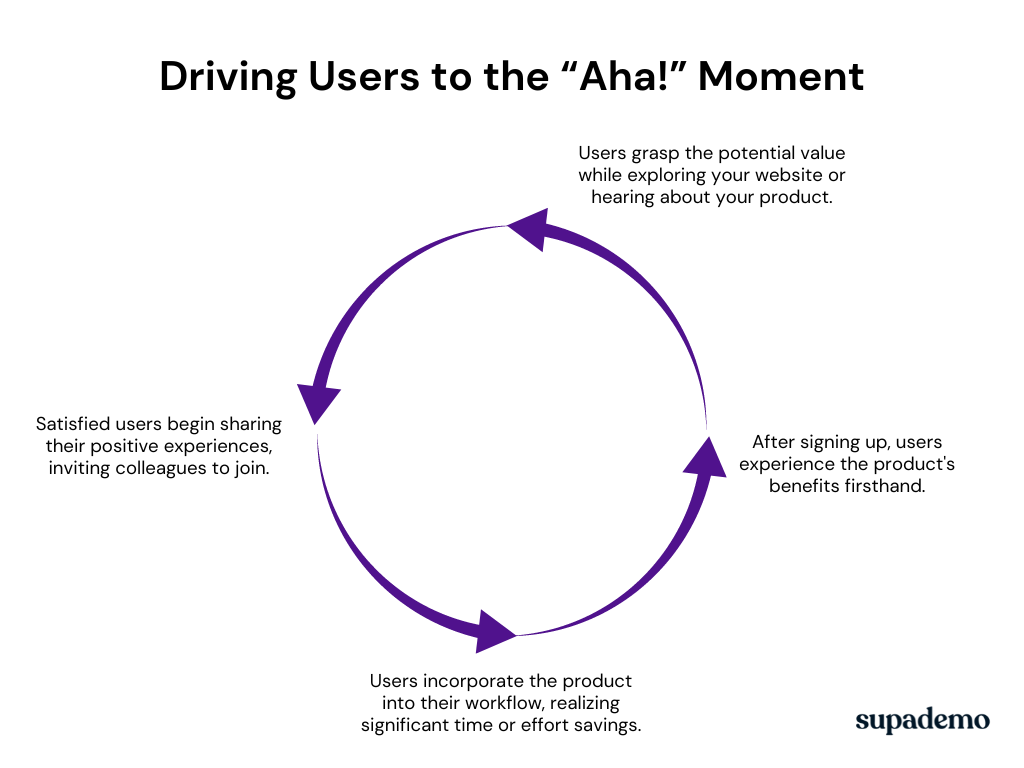
- Discovery Phase: "Aha! I see how this product could solve my problem." Users grasp the potential value while exploring your website or hearing about your product.
- Initial Engagement: "Aha! This actually works for me!" After signing up, users experience the product's benefits firsthand.
- Regular Usage: "Aha! This has become an essential part of my routine." Users incorporate the product into their workflow, realizing significant time or effort savings.
- Advocacy: "Aha! My team needs to know about this!" Satisfied users begin sharing their positive experiences, inviting colleagues to join.
Remember: Effective product-led onboarding isn't about rushing towards a single "Aha" moment. Instead, it's about crafting a thoughtful journey filled with multiple revelations. Each "Aha" builds upon the last, deepening the user's connection with your product and increasing its perceived value.
“If a customer doesn’t understand the context of your app, can’t immediately see its benefits, or has a bad initial experience (slow loading times, clunky interface, etc.), you’ve likely squandered your only chance from the get-go.”, Lesley Park
Tips For The Best Product Onboarding Experiences

1. Start from the very beginning - the signup experience
Creating a smooth, seamless signup process is crucial for effective product-led onboarding. Remember, your product's merits should drive growth, so simplifying the entry point is essential.
Keep the initial signup requirements minimal, asking only for essential information. This approach reduces barriers to entry and increases the likelihood of users exploring your product further.

2. Gauge and personalize based on the customer's use-case
Understanding why users are signing up for your product is vital to creating a truly effective onboarding experience.
Utilize the Jobs to be Done (JTBD) framework to delve into customer psychology and motivations. Consider implementing a brief JTBD survey during the welcome process to gather valuable insights.
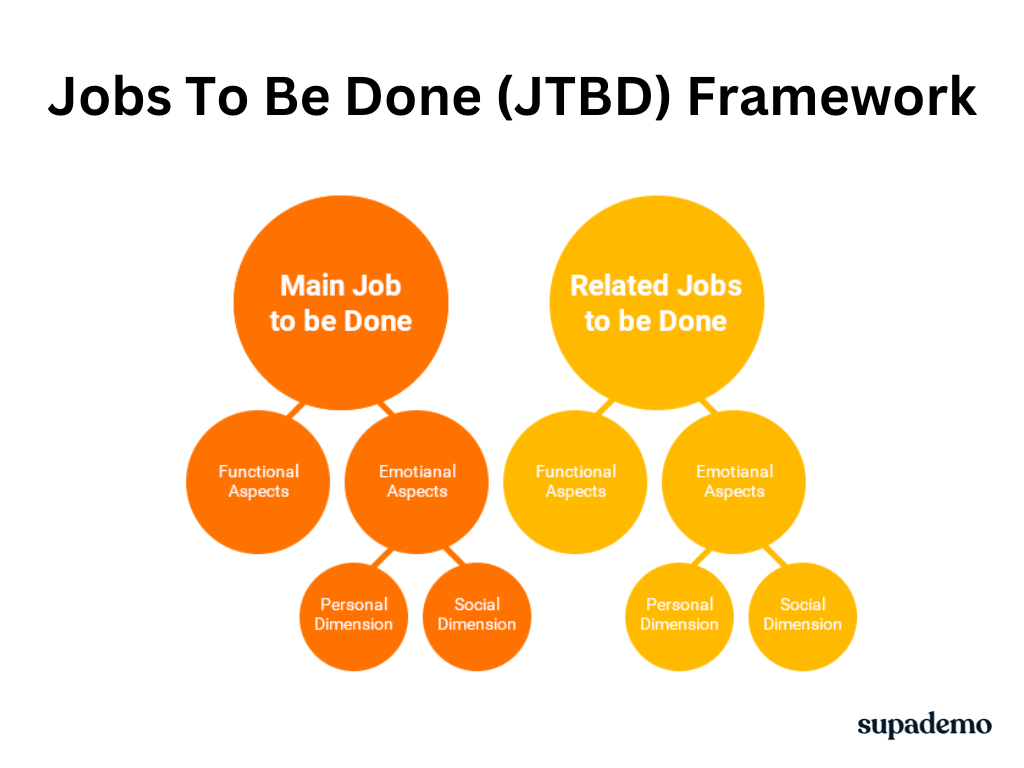
This data allows you to personalize the onboarding journey, ensuring users quickly see the relevance and value of your product to their specific needs.

3. Signup ≠ activation - You need to drive activation
Once users have signed up and you've gathered initial data, guide them toward the activation point - the moment they start experiencing real value from your product. This is critical for converting free users to paid customers and reducing churn.
Implement an interactive checklist to guide users through key features, helping them engage with core functionalities. This approach not only educates users but also provides a sense of progress and achievement, encouraging further exploration and adoption of your product.
Supademo does this by making the first recording "semi"-mandatory during onboarding. The aim is to elicit a "wow factor" as part of their first impression of Supademo.

4. There's more to be done beyond activation
Effective onboarding continues past the initial activation point. Your goal is not just to convert and retain customers but to showcase ongoing value and encourage upgrades.
Consider these strategies:
- Create targeted checklists for advanced features
- Use hotspots and tooltips to highlight upgrade-worthy features
- Leverage satisfied users for word-of-mouth marketing and reviews

Remember, a well-crafted onboarding experience can turn users into powerful advocates for your product.
5. Updated users = retained customers
As your product evolves, maintain clear communication with users.
You can offer contextual guidance for new features, use modals and banners to announce updates, and send regular communications via email or in-app notifications. You can also provide self-service support options like knowledge bases and FAQs.

Keeping users informed helps them adapt to changes and maximizes the value they get from your product.
6. Optimization is key
Remember, optimization is an ongoing process. Continuously test, learn, and iterate to refine your onboarding experience and drive user success.
Onboarding metrics such as activation are a leading metric that can help forecast user retention and recurring revenue – helping you be proactive rather than reactive.
"If you're building a self-serve, product-led software experience, you should be reviewing and optimizing your onboarding flow at least once per quarter.", Joseph Lee, CEO, Supademo
Three Examples of Product-Led Onboarding
1. Figma

Figma's product-led onboarding process is a masterclass in user-centric design. Here's how they create a personalized and efficient onboarding experience:
1. Use case identification: The welcome message includes a quick survey to understand the user's primary goals.

2. Customized walkthroughs: Based on the user's needs, Figma delivers targeted interactive tutorials showcasing relevant features.

3. Use-case-specific templates: Figma avoids the dreaded "blank page" syndrome by providing templates and examples based on the user's input during onboarding.

4. Flexible learning: Users can reset the onboarding process through the help center, allowing for revisiting key concepts.
5. Progressive feature introduction: Figma gradually unveils its tools, aligning with the user's growing familiarity and needs.
6. Community integration: Figma leverages its active user community to provide additional resources and peer support.

By focusing on the user's specific needs and jobs-to-be-done (JTBD), Figma ensures that new users quickly grasp the most valuable aspects of the platform.
This approach not only accelerates the learning curve but also demonstrates Figma's versatility across various design scenarios. The result is an engaging, efficient onboarding process that sets users up for success from day one.
2. Airtable

Airtable's onboarding process stands out for its emphasis on personalization and user engagement.
Here's how they excel in product-led onboarding:
1. Smart data collection: The sign-up process doubles as a user profiling tool, gathering key information to tailor the experience.

2. Customized journeys: Based on role, industry, and company size, Airtable creates personalized onboarding paths.

3. Interactive UI elements: Hotspots and slideouts guide users through the interface, highlighting relevant features.

4. In-app Resource Center: A comprehensive self-service support hub offers guides, tutorials, and assistance without leaving the app.
5. Progressive feature introduction: Airtable gradually unveils its capabilities, aligning with the user's growing familiarity.
By combining these elements, Airtable creates an onboarding experience that feels individually crafted. This approach not only accelerates user adoption but also demonstrates the platform's versatility across various use cases. The result is an engaging, value-driven introduction that sets the stage for long-term user success and loyalty.
3. Notion

Notion's onboarding approach is both engaging and user-centric, designed to quickly demonstrate value and encourage adoption.
Key elements of Notion's onboarding strategy:
1. Goal-oriented approach: Notion asks users about their objectives, allowing for tailored onboarding experiences.

2. Checklist: A guided to-do list helps users explore key features while accomplishing real tasks.

3. Pre-populated content: Notion avoids the dreaded "blank page" syndrome by providing templates and examples.

4. Progressive complexity: The platform introduces advanced features gradually, preventing overwhelm.
By focusing on immediate value and personalization, Notion creates an onboarding experience that feels intuitive and rewarding. This approach not only aids in quick adoption but also showcases the platform's versatility, setting the stage for long-term user engagement and potential account expansion.
Use Supademo For Interactive Product Onboarding

Supademo can help scale product-led onboarding with interactive demos. Empower new users with guided product walkthroughs and frictionless user onboarding experiences, in-app or out-of-app.
Here are the benefits of using Supademos in product-led onboarding:
- In-app onboarding: Guide users through key features, familiarizing them with the product's interface/capabilities as soon as they sign up.
- Personalized onboarding emails: Embed interactive demos to reinforce key concepts, highlight new features, or showcase advanced functionalities.
- Knowledge base & help center: Provide visual, hands-on product walkthrough for users, enhancing self-paced learning and reducing support burden.
"The ability to create and share demo collections is awesome. I can easily create starter kits for new users with multiple, short demos.”, Oliver Meakings, Co-founder at Senja
Ready to start creating better product onboarding experiences? Sign up for a free trial of Supademo - no credit card required.


